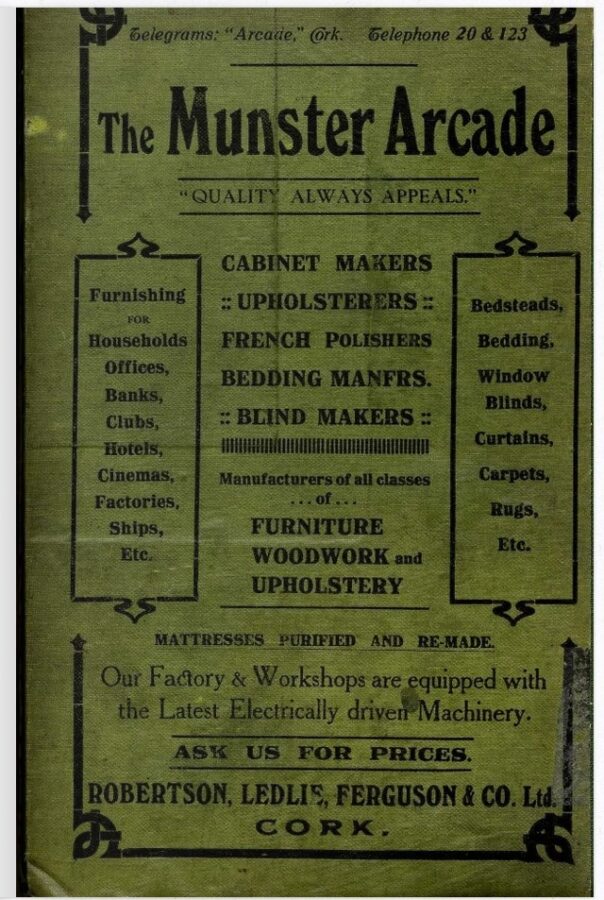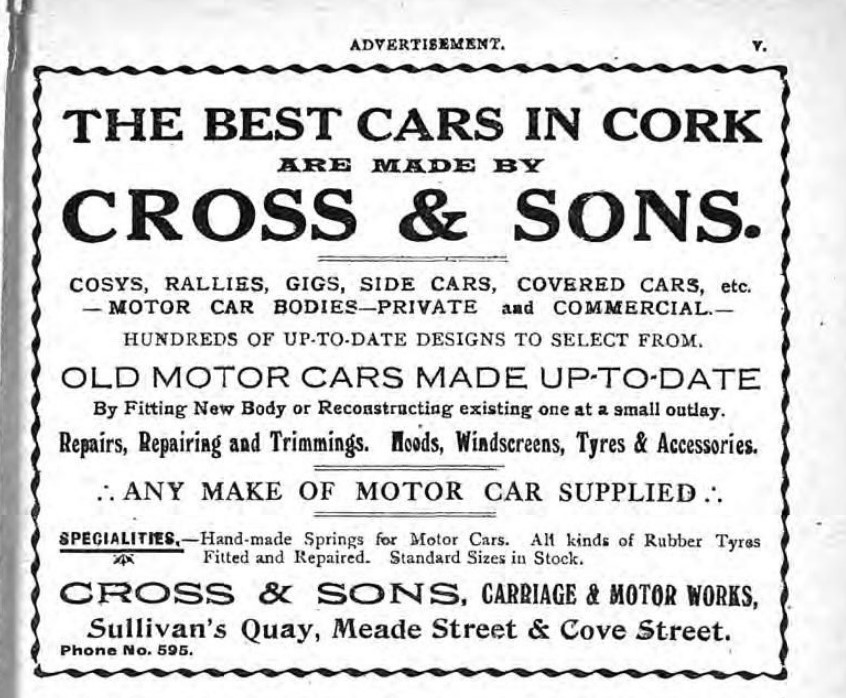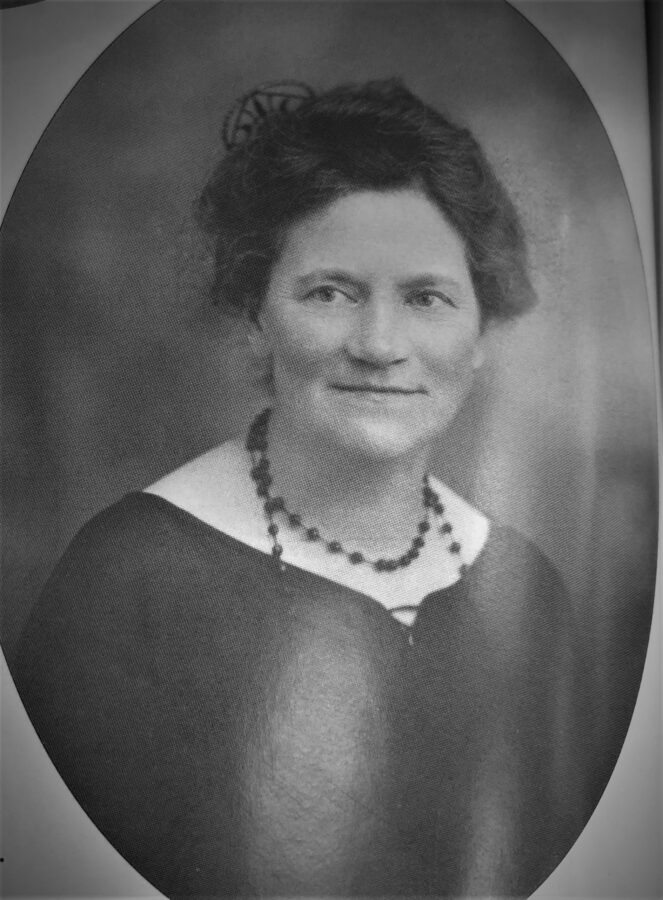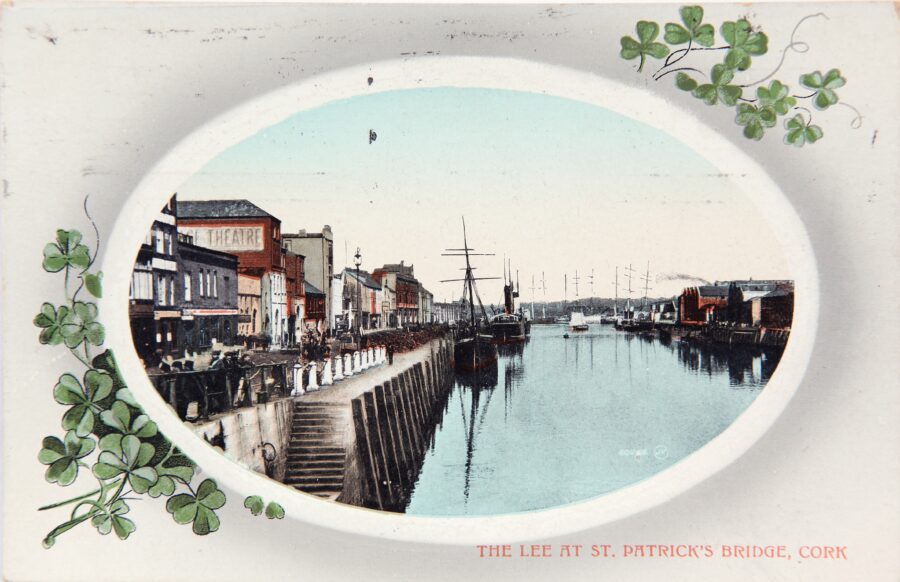
Kieran’s Our City, Our Town Article,
Cork Independent, 23 February 2023
Recasting Cork: The Slow Rebuild
In the first two months of 1923, there were some important movements in the reconstruction narrative in Cork City Centre. It was just over two years on from the Burning of Cork in December 1920. By early January 1923, only a few buildings had been rebuilt – namely the Munster Arcade buildings off Oliver Plunkett Street and several buildings on the side streets. However, no rebuilding work had started on St Patrick’s Street.
In the first week of January 1923, the general conditions governing a competition for designs was published for the reconstruction of a new City Hall. Cork Corporation’s Law and Finance Committee oversaw the competition, which was limited to architects living and practicing in Ireland. Mr Lucius O’Callaghan FRIAI was appointed by the Corporation to act as assessor. The prize for the best design was £500, second, £200, and the third £100. The style of architecture and the materials to be employed were left to the discretion of the competitors, but it was essential that the buildings would be of “good architectural character, expressive of their purpose, and without unnecessary elaboration”. It was desired that Irish materials be used as far as possible.
One of the preferrable conditions was that the new assembly hall or concert hall should have seating accommodation for 1,400 persons. Provision was also to be made for a platform for concerts, lectures to accommodate 150 persons, space for organ, retiring rooms. There should also be a suite of rooms for the Lord Mayor, accommodation for caretaker, and better accommodation for staff. That being said correspondence was received by the Corporation that funding for the rebuilding of City Hall was still not in place at central government level.
By early February 1923, a large number of compensation claims in Cork had been considered by the Shaw Commission or the Compensation (Ireland) Commission – a joint partnership between Westminster and the Irish Free State, where Westminster paid up through the Irish Free State. A total of 31 assessors were employed on the commission. The commission considered damages to goods and property. Indeed, the new chairman Sir Alexander Wood Renton was about to take over from Lord Shaw, who had stepped down from his chairman role. By mid-February over £400,000 in compensation for destroyed goods, in particular, had been settled for Cork businesses affected by the Burning of Cork.
In mid-February 1923 at a meeting of the Corporation’s Cork Reconstruction (Finance) Committee, Thomas Kelleher and John Sisk, representing the builders who had contracts in connection with the reconstruction scheme, appeared before the Committee. Mr Kelleher highlighted to the committee that the position of the contractors was becoming practically intolerable owing to the treatment from the financial point of view that has been meted to them by the Irish Free State Government. In order to advance progress on rebuilding schemes, the Government were paying for large parts of the reconstruction in Cork. The members of the committee knew that in ordinary commercial life when an architect or engineer gave a certificate for work done on foot of a contract that they were paid in a few days and sometimes within twenty-four hours. The position was that some certificates running back as far as the previous October 1922 had not been paid – there was £15,000 due on these certificates alone. Unless some arrangement was made towards expediting payment there would be no alternative for the contractors but to stop work.
It was on the suggestion of the Reconstruction Committee that these works were started, but now the contractors felt let down financially. Mr Kelleher, builder, noted that he has read in the press some months previously that certificates had been passed for payment for £6,000 to the Munster Arcade, a job, which had been completed but for which the contractors had not yet got a received a penny from central government who was administering payment.
Certificates for £15,000 were, Mr Kelleher understood, now in the hands of the Committee or the Town Clerk, and the builders were entitled to certificates for practically a similar amount or the work that had been done since October 1922. He deemed it futile to look for certificates for a second instalment when the first had not been honoured.
The Chairman J Kelleher, Town Clerk, said that as far as the committee were concerned they fully appreciated the position of the builders. He believed himself that the government were simply playing with the matter.
At the meeting, it was also discussed how much of the Shaw Commission payments could go towards or supplement actual construction. The vast amount of the almost half a million pounds claimed by business establishments for the replacement of stock did not even in many instances afford full compensation to the proprietors for the loss of goods that were destroyed by fire.
In the immediate days following the meeting, a deputation representing Cork Corporation i.e. Jeremiah Kelleher, Town Clerk, and Cllr John Horgan went to Dublin to raise concerns and questions. There they met Cork TD Robert Day and proceeded to the offices of the Shaw Commission. There they were informed that the amounts already paid in respect of compensation to Cork traders were for stock and other effects destroyed, and that the balance of the money awarded, and which was being withheld was in respect of buildings, and would be paid on the architect’s certificate according as the work of rebuilding the destroyed premises was proceeded with.
Messrs Day, Kelleher and Horgan also interviewed the Secretary of the Ministry of Finance in connection with a recent letter dealing with the stoppage of the payment of awards in compensation claims for actual re-building.
What became apparent in late February 1923 was that the Minister of Finance would pay for the actual physical building work after it was built but the initiative rested with the owners of destroyed properties to get the work started. The worry by Corporation officials was that large scale business establishments with available cash flow could embrace successfully such a government initiative. An architect’s certificate weekly or monthly would bring government money in appropriate and welcome tranches. However, for the smaller shopkeeper the challenge remained where would they get own resources to be able to start work.
Caption:
1190a. Advertisement for Munster Arcade, Cork, 1925, from Guy’s Directory of Cork (source: Cork City Library).


